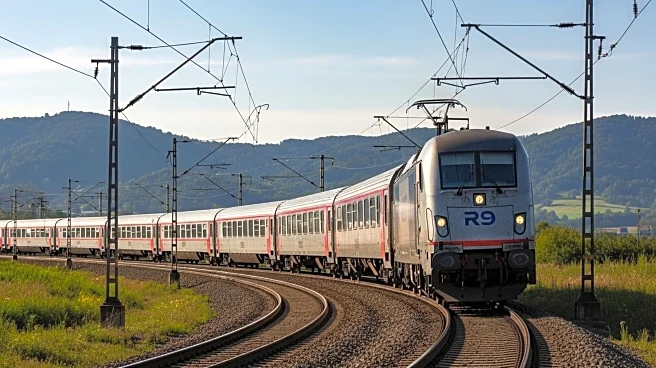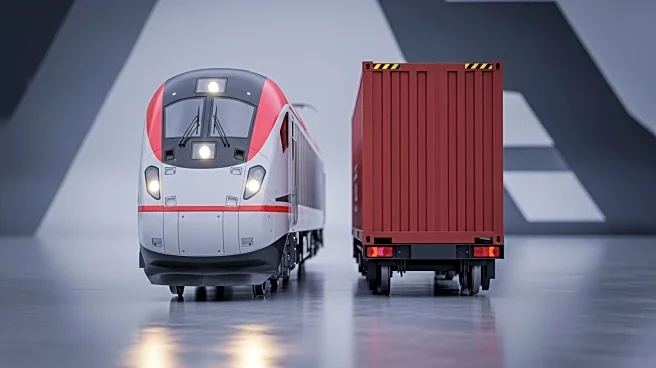What's Happening?
The Association of American Railroads (AAR) has released data indicating an annual increase in U.S. rail carload and intermodal volumes for the week ending August 30. Rail carloads reached 234,740, marking a 0.6% annual gain. This figure surpasses the previous weeks ending August 23 and August 16, which recorded 229,783 and 228,884 carloads, respectively. Five out of ten carload commodity groups tracked by AAR showed annual gains, including chemicals, metallic ores and metals, and nonmetallic minerals. However, declines were noted in petroleum and petroleum products, grain, and forest products. Intermodal containers and trailers also saw a 1.2% annual increase, with 286,762 units, exceeding the previous weeks' figures. For the first 35 weeks of 2025, U.S. rail carloads are up 2.5%, and intermodal units are up 4.1% annually.
Why It's Important?
The increase in rail carload and intermodal volumes is a positive indicator for the U.S. logistics and transportation sectors, suggesting a recovery or growth in demand for freight services. This trend can impact various industries reliant on rail transport, such as chemicals, metals, and minerals, by potentially reducing transportation costs and improving supply chain efficiency. Conversely, the decline in certain commodity groups like petroleum and grain may reflect broader economic challenges or shifts in market demand. The growth in intermodal transport highlights the increasing importance of flexible and efficient logistics solutions in the face of market volatility.
What's Next?
Continued monitoring of rail and intermodal volumes will be crucial for stakeholders in the logistics and transportation industries. Companies may need to adjust their strategies to capitalize on the growth in certain commodity groups while addressing declines in others. The data could influence investment decisions in rail infrastructure and intermodal facilities, as well as policy considerations regarding transportation and trade. Stakeholders will likely watch for further trends in commodity demand and transportation efficiency.
Beyond the Headlines
The data from AAR may also have implications for environmental policy, as increased rail transport can be seen as a more sustainable option compared to road transport. This could lead to discussions on how to further leverage rail infrastructure to reduce carbon emissions. Additionally, the shifts in commodity transport volumes might reflect broader economic trends, such as changes in industrial production or consumer demand, which could have long-term impacts on the U.S. economy.











